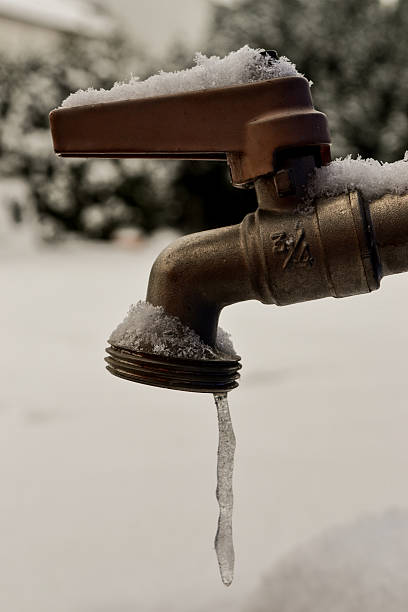Protect Against Frozen Plumbing in Cold Weather: Professional Advice
Protect Against Frozen Plumbing in Cold Weather: Professional Advice
Blog Article
On this page down the page you will find additional excellent ideas with regards to How to prepare your home plumbing for winter weather.

Cold weather can damage your pipes, especially by freezing pipelines. Right here's how to avoid it from taking place and what to do if it does.
Introduction
As temperatures decline, the risk of frozen pipes boosts, possibly leading to costly repair work and water damage. Recognizing just how to stop icy pipelines is crucial for homeowners in cold climates.
Prevention Tips
Insulating at risk pipelines
Wrap pipes in insulation sleeves or make use of warm tape to protect them from freezing temperature levels. Concentrate on pipes in unheated or external areas of the home.
Home heating techniques
Maintain indoor spaces adequately heated, specifically locations with pipes. Open up closet doors to allow warm air to flow around pipes under sinks.
Just how to determine icy pipes
Look for reduced water flow from faucets, uncommon smells or noises from pipes, and noticeable frost on subjected pipelines.
Long-Term Solutions
Architectural adjustments
Think about rerouting pipelines away from outside walls or unheated locations. Add additional insulation to attics, cellars, and crawl spaces.
Upgrading insulation
Invest in premium insulation for pipelines, attic rooms, and wall surfaces. Proper insulation aids maintain constant temperatures and decreases the risk of frozen pipelines.
Shielding Exterior Plumbing
Garden tubes and outdoor faucets
Detach and drain garden tubes prior to winter season. Install frost-proof faucets or cover outside taps with shielded caps.
Comprehending Icy Pipelines
What triggers pipelines to ice up?
Pipes ice up when subjected to temperature levels below 32 ° F (0 ° C) for prolonged periods. As water inside the pipes freezes, it increases, taxing the pipe walls and possibly creating them to rupture.
Threats and problems
Frozen pipes can result in supply of water disturbances, residential property damages, and pricey repairs. Burst pipes can flood homes and cause comprehensive structural damage.
Signs of Frozen Pipeline
Determining icy pipelines early can avoid them from rupturing.
What to Do If Your Pipes Freeze
Immediate actions to take
If you presume frozen pipes, keep faucets open to relieve stress as the ice thaws. Make use of a hairdryer or towels taken in warm water to thaw pipelines gradually.
Final thought
Preventing frozen pipelines needs proactive actions and fast reactions. By understanding the reasons, indicators, and safety nets, homeowners can safeguard their pipes during winter.
5 Ways to Prevent Frozen Pipes
Drain Outdoor Faucets and Disconnect Hoses
First, close the shut-off valve that controls the flow of water in the pipe to your outdoor faucet. Then, head outside to disconnect and drain your hose and open the outdoor faucet to allow the water to completely drain out of the line. Turn off the faucet when done. Finally, head back to the shut-off valve and drain the remaining water inside the pipe into a bucket or container. Additionally, if you have a home irrigation system, you should consider hiring an expert to clear the system of water each year.
Insulate Pipes
One of the best and most cost-effective methods for preventing frozen water pipes is to wrap your pipes with insulation. This is especially important for areas in your home that aren’t exposed to heat, such as an attic. We suggest using foam sleeves, which can typically be found at your local hardware store.
Keep Heat Running at 65
Your pipes are located inside your walls, and the temperature there is much colder than the rest of the house. To prevent your pipes from freezing, The Insurance Information Institute suggests that you keep your home heated to at least 65 degrees, even when traveling. You may want to invest in smart devices that can keep an eye on the temperature in your home while you’re away.
Leave Water Dripping
Moving water — even a small trickle — can prevent ice from forming inside your pipes. When freezing temps are imminent, start a drip of water from all faucets that serve exposed pipes. Leaving a few faucets running will also help relieve pressure inside the pipes and help prevent a rupture if the water inside freezes.
Open Cupboard Doors
Warm your kitchen and bathroom pipes by opening cupboards and vanities. You should also leave your interior doors ajar to help warm air circulate evenly throughout your home.

We were introduced to that editorial on How to prepare your home plumbing for winter weather from someone on a different domain. Sharing is caring. You just don't know, you might be helping someone out. I enjoy reading our article about Helpful Tips to Prevent Frozen Pipes this Winter.
Automated Marketing Report this page